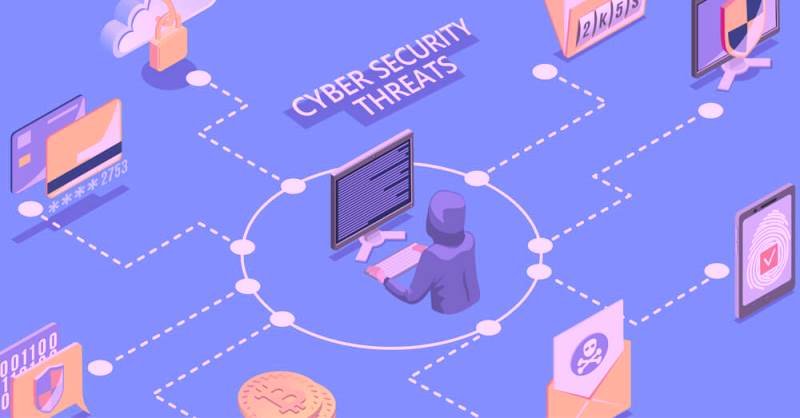As technology continues to advance and shape our lives, the future of online privacy, security, and cyber security threats remain a concern for many individuals and businesses.
With the increasing use of the internet and connected devices, understanding the latest trends and predictions in the field of online privacy and security is crucial.
We will explore what experts believe to be the most significant trends and developments in online privacy and security.
Online security is tough, but when it comes to securing the family, it’s super easy by having v380 pro cameras.
What are the top security trends?
The field of online privacy and security is rapidly evolving, which brings new trends and developments. Some of the top security trends for 2023 include:
- Artificial Intelligence-based security: AI-powered systems will play a larger role in detecting and preventing cyber threats, including hacking and fraud.
- Increased use of encryption: With growing concern over privacy and data security, businesses and individuals should increase the use of encryption to protect sensitive information.
- Rise of the Internet of Things (IoT): As the number of connected devices grows, the security of these devices will become important.
- Greater emphasis on cloud security: Now more businesses move their data and operations to the cloud. Hence, protecting that data from cyber threats will become a priority.
- Heightened concern over 5G security: As 5G networks are deployed, securing these networks against cyber threats becoms a critical concern.
These trends represent just a few of the developments that shape the future of online privacy and security. It’s important to stay informed and proactive in protecting your privacy and security as the landscape continues to evolve.
What is Trend Micro 2023 prediction?
Trend Micro is a leading provider of cybersecurity solutions and services. Their predictions provide insight into the trends and challenges that helps the field of cyber security in the coming years.
According to Trend Micro, the following trends are expected to shape the future of cyber security.
- An increase in AI-powered cyber threats.
- The growing importance of cloud security.
- An increase in IoT-based attacks, and the evolution of ransomware attacks.
These predictions highlight the need for organizations and individuals to stay informed and proactive in protecting their digital assets.
This may involve investing in new security solutions, and implementing stronger security measures. On top of it regularly update software and devices to stay ahead of emerging threats.
What are the 7 types of cyber security?

Cyber security refers to the protection of digital assets and information systems from unauthorized access, theft, damage, or disruption.
There are several different types of cyber security, each of which plays a critical role against different types of threats. Here are seven key types of cyber security:
- Network security: Protects against unauthorized access and threats to computer networks, such as hacking and denial-of-service attacks.
- Application security: Focuses on securing the software and applications that run on digital devices, such as browsers and mobile apps.
- Cloud security: Addresses the security risks associated with cloud computing, including data breaches and loss of control over sensitive information.
- Endpoint security: Protects individual devices, such as laptops, smartphones, and tablets, from cyber threats and data breaches.
- Identity and access management (IAM): Controls who has access to sensitive information and systems, and ensures that only authorized users can access them.
- Data protection: Secures and protects sensitive data, such as financial information and personal records, from theft, loss, or unauthorized access. To get this protection look out NordVPN/MrBeast which is one the most suggested VPNs from Mrbeast.
- Disaster recovery and business continuity: Ensures that critical systems and data can be quickly recovered in the event of a cyber-attack or other disaster.
By understanding these seven types of cyber security, organizations, and individuals can understand the types of threats they face and take the necessary steps for protection.
What are the cyber security threats for 2023?
Cybersecurity threats are constantly evolving, and new threats emerge every year. Experts predict an increase in the sophistication and scale of cyber attacks, as well as a rise in threats targeting the growing Internet of Things (IoT) landscape.
There will also likely be an increase in AI-powered threats, as attackers seek to leverage machine learning algorithms to automate and scale their attacks.
Additionally, cloud security will become increasingly important, as more organizations adopt cloud computing and store sensitive data in the cloud.
Ransomware attacks will also continue to evolve, with attackers using increasingly sophisticated methods to target organizations and individuals. To stay ahead of these cyber security threats, organizations and individuals need to remain vigilant and implement strong security measures.
Conclusion
In conclusion, the future of online privacy and security is poised to be shaped by several key trends and challenges in 2023.
As the digital landscape continues to evolve and expand, cyber security will become increasingly important, and individuals and organizations must take proactive steps to protect their digital assets.
By staying informed and up-to-date on the latest trends and threats, and by investing in robust security solutions and practices. Organizations and individuals can ensure that their online privacy and security are protected now and in the future.
